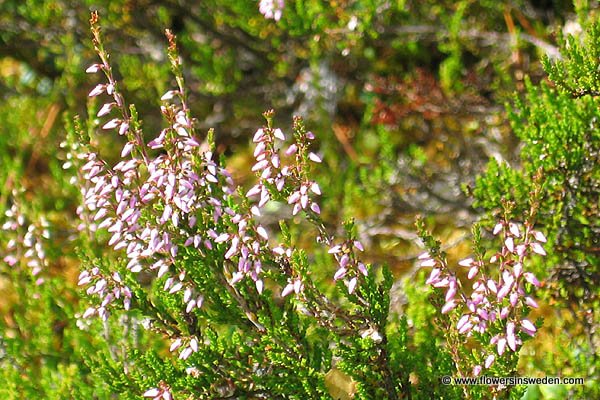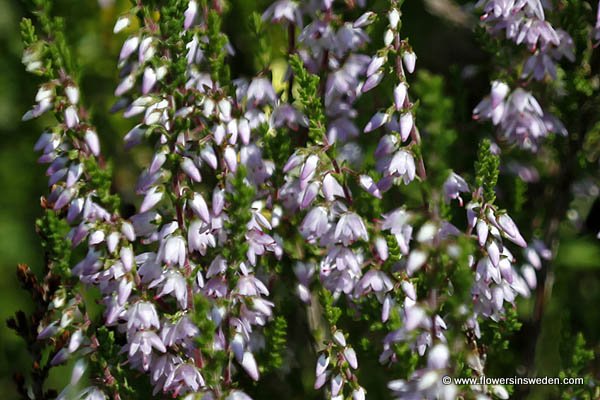
| Scientific name: | Calluna vulgaris L. (Hull) | |
| Synonym name: | Erica vulgaris L | |
| Swedish name: | Ljung, höstljung | |
| German name: | Besen-Heide | |
| Nederlandse naam: | Struikhei | |
| English name: | Heather, ling | |
| Plant Family: | Ericaceae, Ljungväxter, the Heath family |

|
| Life form: | Perennial shrub | |
| Stems: | Height 10–50 cm, erect, densely branched, woody | |
| Leaves: | Woody reddish stems, with small, threadlike, stalkless, opposite, erect leaves, overlapping,1 in 4 rows, and arrow-shaped. The leaves are smooth, small, and hoary, and hollow below | |
| Flowers: | Mauve (pale bluish-purple), white, bell-shaped racemes | |
| Flowering Period: | August, September | |
| Fruits: | Hairy capsule protected by calyx | |
| Habitat: | Forest, thicket, heath, coast |

Derivation of the botanical name: Calluna, kalluna (Greek),'to sweep', as the plant was used to make brooms. erica, eric, ερεικη, heath, broom. vulgaris is derived from a Latin word for 'common'. It is used in Great Britain for brooms, thatch, beds for the poor, and for heating ovens. ling, Anglo-Saxon lig, "fire"; it was used for fuel.


|